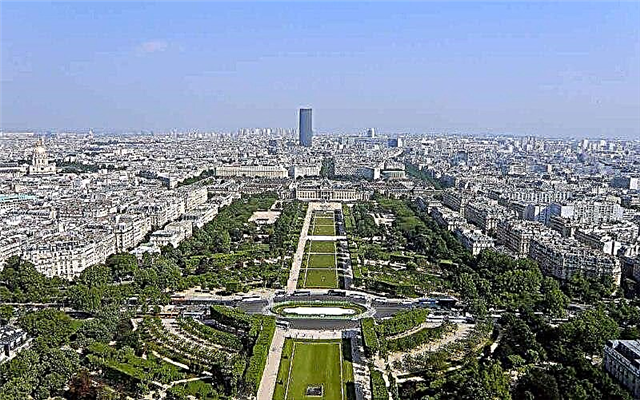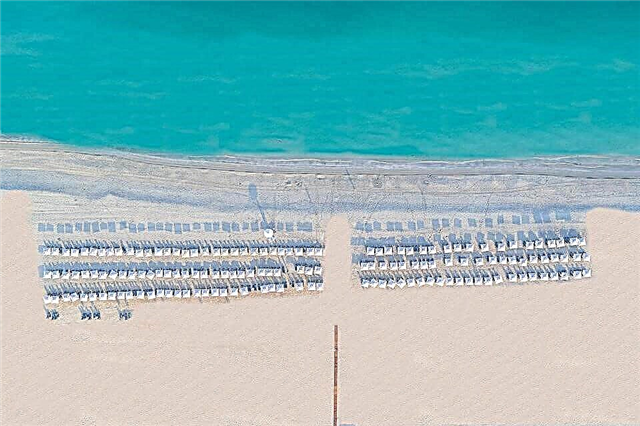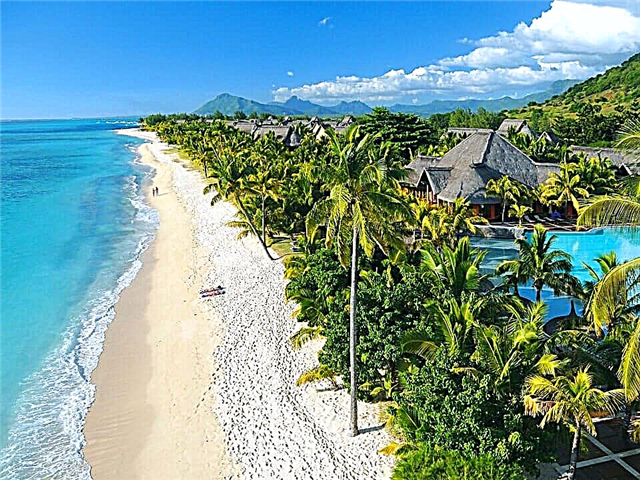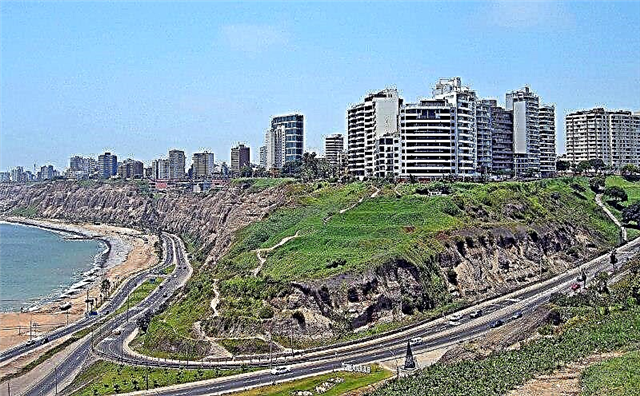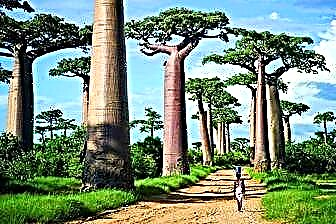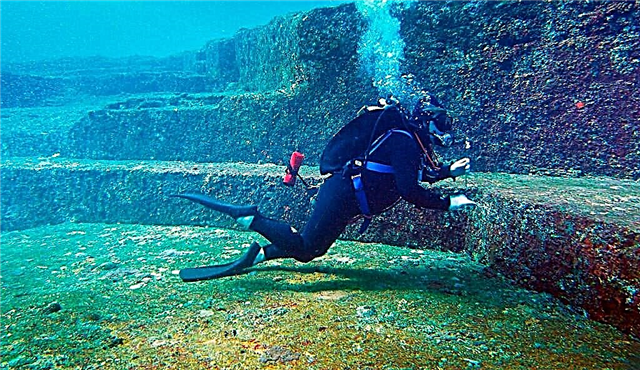In 1985, a sensation appeared in the world of amazing discoveries: on the Japanese island of Yonaguni, washed by the waters of the East China and Philippine Seas, a similarity of pyramids was discovered in the coastal underwater zone. Yonaguni is Japan's westernmost island, occupying only 28.88 square kilometers and a population of 1,581. The outlines of the island resemble a compass needle stretching from west to east; its eastern end bears the symbolic name "Agari-zaki", meaning "the place of sunrise". The western edge is named "Iri-zaki", which in translation sounds like "the place of sunset." In the coastal waters of the island, diving and observation of hammerhead sharks are practiced.
The underwater world in these places is very picturesque: the abundance of colorful fish with exotic colors among the red "bushes" of corals is a magical picture that attracts the attention of numerous diving enthusiasts.

Sensational find
A diving instructor and owner of a small hotel, Kihachiro Aratake, often dived into the blue waters, photographing especially beautiful corners of the underwater world for tourists. In the spring of 1985, having descended once again to the bottom in a new place, he suddenly saw some kind of rock mass rising up and extending quite far in breadth. Shocked Kihacharo realized that in front of him was some extraordinary object that required serious study, and reported this to the official authorities and the press. Newspapers and magazines began to print this news, interpreting the emergence of this mysterious underwater structure in different ways. From that moment, a detailed survey of all objects located in the waters around the island began, which became a sensation in scientific archeology.
[tp_calendar_widget origin = MOW destination = TYO responsive = true subid = ”jonagunivyaponii”]
Description of the underwater pyramids
The first studies revealed that stone objects occupy a vast area almost around the entire southern coast of the island. The central structure is a stone massif called a monument, which is a rather complex structure, the base of which is a high platform 200 meters long, 150 meters wide, and 25 meters high. There are flat terraces on it, descending with massive steps. The architecture of this structure resembles the pyramids of the ancient Incas, confirming the hypothesis of the man-made origin of the underwater city, as the strange object was called later.

This name is not accidental, because continued surveys discovered a stone fence made up of huge rock boulders and a road, as it were, encircling the city-monument. Masaaki Kimura, a geology professor at Ryukyus University of Okinawa, who has been studying the underwater city for many years, found that part of the original fence was made of pieces of limestone that had never been found here. This observation allowed him to assert that limestone was brought here from other places specifically for construction.
He also cited a lot of evidence of the artificial formation of stone pyramids: round holes up to 2 meters deep, traces of ornament from geometric figures on rock stones, remnants of sculptural images with traces of carving, and even, according to Kimura, traces of welding. still remains a mystery, and the construction of underwater giants is also difficult to explain. The correct clear edges of the structures, the strict symmetry of the location of the steps also testify to the man-made origin of objects, so now scientists are looking for an explanation of why and how long they have been under water.

Another researcher of underwater structures Shoch does not exclude that the foundation can be a natural stone formation used by ancient people as a site for the construction of a city. At first, he completely ruled out the participation of people in the formation of the underwater monument, but changed his mind under the influence of the facts presented by the Japanese professor.
Evidence of human involvement in the creation of the pyramids
During the expeditions, finds were discovered that confirm Kimura's theory of the man-made origin of the underwater pyramids. At a depth of 15 meters, a sculpture carved from stone was found, on which one can see long arms, reminiscent of the hands of the Egyptian Sphinx; headdress. According to the professor, the sculpture resembles a statue of the ancient king of Okinawa.

Scuba divers floating around the platform saw carvings on the rocks similar to ancient hieroglyphs; embossed images of animals. Researchers have discovered stone tablets with symbols inscribed on them, reminiscent of Egyptian letters, which have not yet been deciphered. Scientists believe that these tables contain historical information about a possibly sunken city. Kimura's many years of studying the underwater ruins made it possible to establish a number of similarities with ancient excavations on land: the semicircular vault in the underwater platform exactly corresponds to the entrance to the ancient Nakagusuku castle, which belonged to the imperial Ryukyu dynasty, found during excavations in Okinawa.
Professor Kimura's Evidence
According to his calculations, these underwater structures are more than 5000 years old, and the professor continues to argue that the objects found are the remains of an ancient city, a whole complex of buildings, including sculptures, castles, a stadium, connected by road infrastructure. As the inquisitive scientist believes, all objects were flooded during a catastrophic earthquake, when tremendous changes in the earth's crust occurred, a giant tsunami was formed, the waves of which buried ancient structures. In support of his version, he investigated stalactites and stalagmites of underwater caves, which can form only in surface space for a long time.

He concludes that their age is 5000 years, and they sank along with the stone structures that are the creation of human hands. So far, no one can make an unambiguous conclusion, and the mystery of the underwater pyramids will excite the minds and imaginations of researchers for a long time.
Another interesting place in Japan: Gankajima is a ghost island.

